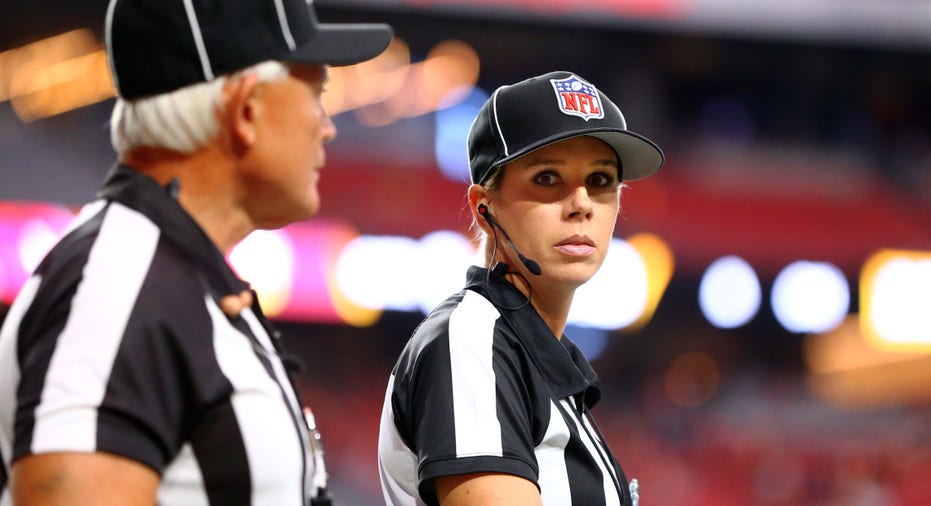The NFL Wants More Women On The Field

While women compose an ever-growing portion of the National Football League’s fan base, they’ve struggled to land coaching or officiating roles in a sport traditionally dominated by men. This month, league officials continued their push to address gender inequality by formally appointing Sam Rapoport, a longtime NFL employee and former women’s professional football player, as its new director of football development.
Rapoport is tasked with identifying women throughout the country who are qualified to hold on-field positions in the NFL. At her direction, the league is developing a program that will train female candidates active on the high school, college and professional level to be coaches, officials, scouts and trainers – and then connect them to the NFL’s 32 teams.
“Right now, the overall goal is to create opportunities for females on the football side. It really is [about] putting women in a similar position that men have had previously to succeed and to advance,” Rapoport told FOXBusiness.com. “We know those women are out there, we know they’re qualified and we know they know football just as well as men do. The challenge previously has always been the connection to the NFL.”
The initiative is part of the NFL’s bid to address concerns raised by the domestic violence scandals involving Ray Rice and Adrian Peterson in 2014. Since then, NFL Commissioner Roger Goodell and his staff have placed a renewed emphasis on hiring women in key positions and attempting to connect with the league’s sizable female audience in an authentic way. As of 2013, women compose approximately 45% of the NFL’s fan base and about one-third of its viewership, a league-commissioned study found.
From 2009 to 2013, female viewership of NFL games rose 26%, compared to just 18% among men, according to Ebiquity, a media marketing and analytics firm. The NFL has a direct financial incentive to show young women that professional football is both a welcoming community and a potential career option – especially given its goal of reaching $25 billion in annual revenue by the year 2027.
Rapoport, who started in the NFL league office as an intern at age 21, says that her program will do just that.
“I’m a firm believer, especially for young girls, in [showing] them that adult women are coaches, scouts, officials. They’re in authority positions on the football field,” Rapoport said. “I firmly believe that that does change the mentality of men and women as they consider women in these roles.”
Women currently hold about 30% of the NFL’s front office positions, but they’re also making inroads on the field. In 2015, the Arizona Cardinals hired Jen Welter, the NFL’s first female position coach, while Sarah Thomas became the league’s first-ever full-time female on-field official.
While current and former women’s professional football players form the most obvious pool of candidates, Rapoport says playing experience isn’t a requirement. The league will also seek out women in football administration and operations roles at the amateur and collegiate level.
The biggest challenge, she added, is to erase the stigma that only men can coach teams or train players.
“My position and the program we’re going to execute is really going to start to show women that the NFL is for them and we’re going to create opportunities to show them that,” Rapoport said.



















